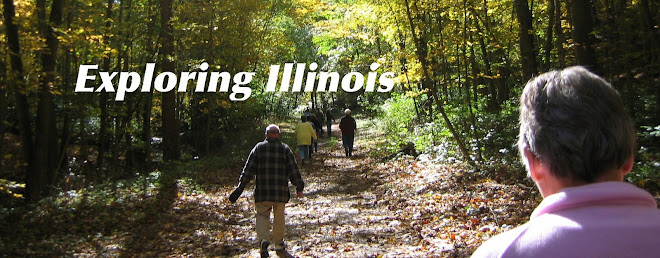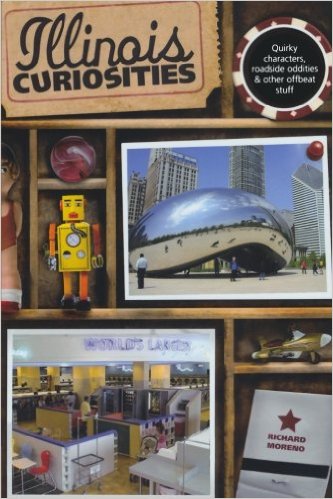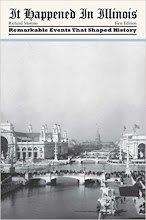
One of the more unusual sights in the historic town of Quincy is a two-story Moroccan-style castle that overlooks the Mississippi River.
Located south of the downtown, the structure known as Villa Kathrine was erected in 1900 by a wealthy local eccentric named George Metz.
Metz’ fortune was inherited; in fact, he never worked a day in his life. His father, William, was a successful local pharmacist. After his mother died in 1897 (his father had passed away four years earlier), Metz embarked on a two-year tour of the Mediterranean and Africa.
When he returned, he began planning a private residence that would incorporate the architectural style and design of the Mediterranean/Northern African buildings he had admired during his travels, Specifically, he wanted to re-create the look of the Villa ben Abhen in Morocco.
IN 1900, Metz purchased a site on a bluff south of State Street (now known as 532 Gardner Expressway) and began working with a local architect, George Behrensmeyer, to design the plans for his dream house, which, it is said, was named after his mother (although, weirdly, her name was spelled Katherine).
He shared sketches, notes and drawings he’d made during his journeys with Behrensmeyer, who incorporated many of the concepts into the final plans.
A year later, the structure was completed at a total cost of $7,000. Despite its exotic look, the house was constructed using local materials, including local limestone in the foundation.
From the outside, Villa Kathrine certainly has nothing in common with the other turn-of-century Victorian and Queen Anne mansions in Quincy, which boasts a sizeable inventory of such homes.
On its north end is a tall, rectangular tower topped by a large dome while at the opposite end there is another, similar-sized tower, decorated with diamond lattice work and capped with a small minaret decorated with red and white stripes —said to resemble the Mosque of Thais in Tunisia.
Mediterranean-Arabic furniture, artifacts and antiques, which Metz had purchased during his travels, were used to furnish and decorate the house.
Few photos of the house’s interior exist so it’s not known how it originally was arranged or appeared.
A very private person who never married, Metz, however, was no shut-in. A 1908 Quincy Daily Journal article noted that the Ladies of the Round Table, a Quincy women’s social club, were given a tour of the residence by Metz, who “told them all about the treasures in it that he had gotten in Algiers.”
Metz main companion for many years was a 212-pound bullmastiff, named Bingo. According to reports, Metz bought the dog, said to be the biggest mastiff in the world, in 1900 in Denmark.
When Bingo died in 1906, the enormous canine was said to have been buried in Metz’ rose garden, wearing a diamond-studded collar. In later years, after the house was abandoned, fortune hunters dug up the grounds in the hope of locating the collar.
Historians, however, believe the story of the jeweled collar is apocryphal since there’s no record Metz ever purchased such an item.
In 1912, Quincy grocer Archibald Behrens and his wife persuaded Metz to sell his home to them. At the time, Metz was 63 years old and his family was concerned about him living alone in the two-story house. Behrens and his wife said they loved the house and all of its furnishings and promised to be good stewards.
The Behrens, however, were merely fronting for a local railroad, which wanted to tear down the house and use the site for a railroad yard. In return for their role in the purchase, the railroad promised the contents of the house to the Behrens.
Once Metz vacated the house, however, vandals carted off many of the antiques and furnishings. It’s said that the Behrens ended up with only a single rug.
By 1913, when Metz visited the house with a reporter from St. Louis, he found it in sorry condition with most of its beautiful furnishings gone. He vowed never to return, although he did nearly two decades later, only to be saddened by the sorry state of his dream castle.
After selling the house, Metz moved into the Hotel Newcomb in downtown Quincy and, later, the Lincoln Douglas Hotel. He died of pneumonia in 1937.
Interestingly, the railroad never built its railyard and the house sat vacant for several decades. In 1939, it was partially restored and during the next decade passed through several owners. In 1955, the Quincy Park District obtained the villa and surrounding property, which became a neighborhood park.
Starting in the 1970s, local preservationists began an effort to restore the castle to its original splendor. In recent years, the house has been listed on the National Register of Historic Places and hundreds of thousands of dollars have been raised to renovate the structure, which is now home of the Quincy Tourist Information Center, which offers daily self-guided tours of the villa.








